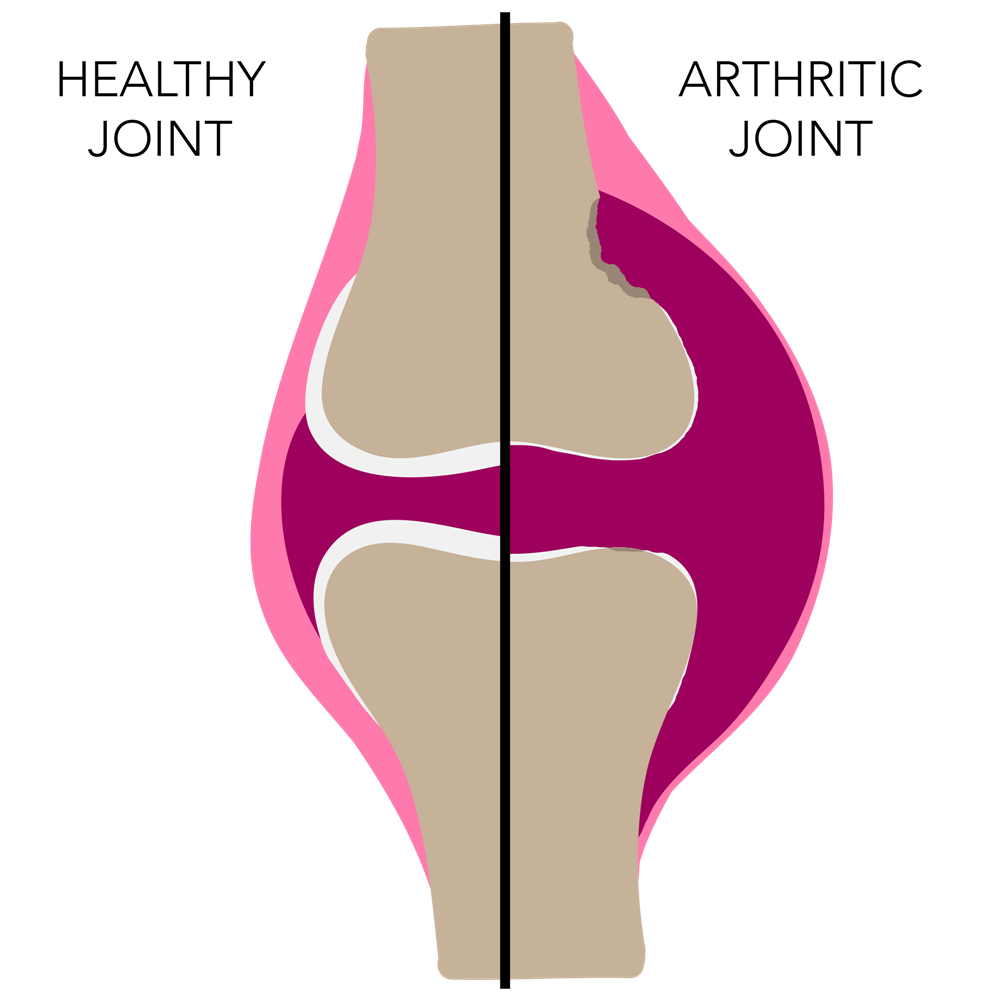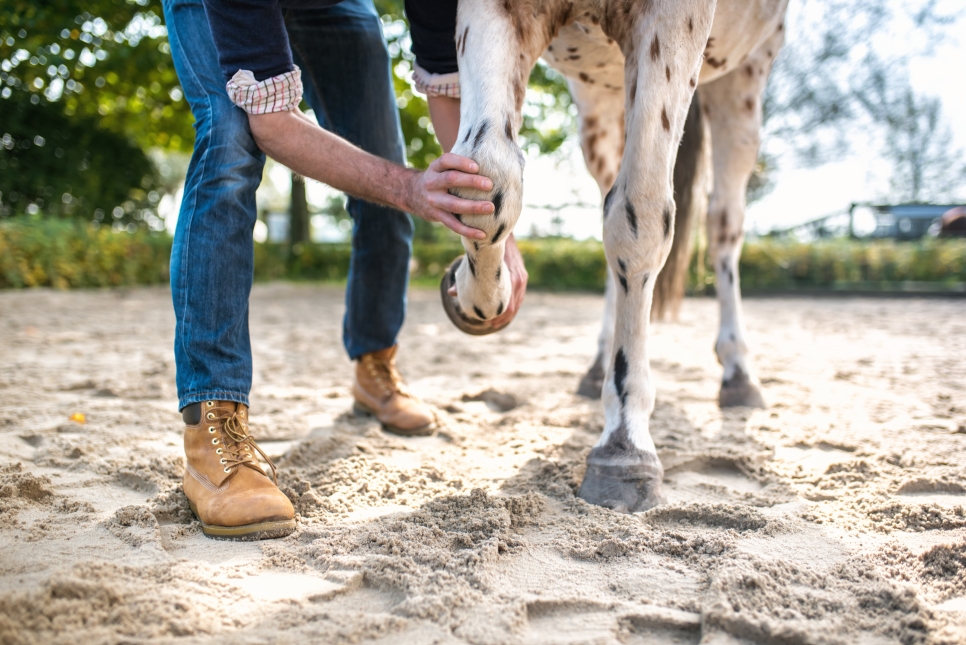What is Arthritis?
Arthritis (synonymous with osteoarthritis) is a painful, progressive condition affecting the joints, as a result of degeneration and a loss of cartilage covering the joint surface.
Essentially, arthritis describes inflammation of a joint and is often also referred to as degenerative joint disease (DJD). Many horse owners are aware of the stress put upon the horse’s joints during exercise and repetition of these forces on the joint cartilage over time is believed to be the primary cause to the horse developing this painful condition. Eventually, as the horse ages, joint structures develop scarring and articular cartilage is worn down as the rate of synovial fluid production slows down with age. Arthritis is a fairly common condition in horses, older horses are more commonly affected but it can affect a horse at any age.
Symptoms vary but mostly include:
- Lameness
- Swelling around the joint
- Reduced range of motion of the affected joint
- A change in joint conformation

Septic Arthritis
This is arthritis caused as a result of an infection. Bacteria from another part of the body spread through the blood stream is the most common stem for infection, but microorganisms may also enter through a wound. It is generally more common in foals as a result of inadequate maternal antibodies from colostrum, and reportedly the most common cause of mortality in foals less than 7 days old. Treatment involves antibiotics and flushing the joint with a sterile solution to remove the bacteria.
Bone Spavin
Bone spavin is the term given to describe arthritis that is typically affecting the two lowest joints in the hock. Similarly to other joints affected by arthritis, it is believed to be a result of excessive wear and tear on the hock joint.
How is the condition diagnosed?
Early diagnosis is key for a promising prognosis. Therefore, it is important you consult your vet promptly at the early signs, such as minor lameness or swelling of the joint.
Firstly, the vet will need to see the horse move. This is often done in hand, at trot on a hard surface in both straight lines and turning a circle each way. The vet will palpate the limb for heat and swelling and may carry out a flexion test.
Following the initial examination and once the vet has identified the affected joint, a nerve block may be carried out, followed by further diagnostic methods.
The most frequently used method for diagnosing arthritis is radiographs (x-rays), however the vet may also use nuclear scintigraphy, arthroscopy, synovial fluid analysis, and ultrasound to diagnose arthritis in your horse.

Managing Arthritis
If you are at all concerned about your horse, it is important to seek prompt veterinary care. Generally, the prognosis is better the earlier the condition is treated.
Managing arthritis really depends on the individual case. As it is a progressive condition and no cure is available, it is usually just a case of keeping the horse comfortable and trying to slow the rate of progression. Often just a combination of medication and rest can ease the symptoms. Veterinary treatment may involve nonsteroidal anti-inflammatory drugs (NSAIDS), treatment with intra-articular corticosteroids or hyaluronic acid, or in some cases, treatment with therapies such as acupuncture or shockwave therapy can have effective results.
Research is currently developing in to new treatments for arthritis in horses. These include blood analysis to detect early signs of degeneration and therefore allow for prompt treatment before progression of the damage to the joint. Scientists are also looking in to harvested or laboratory grown tissue to resurface joint cartilage.
In instances when the condition is caught early, it is usually advised that the horse is rested and provided with nutraceuticals to help soothe the symptoms. The use of a joint supplement can be beneficial in arthritis by providing the building blocks of healthy joint structures.
How can a joint supplement help?
There has been significant scientific research over the years to show that by supplementing the horse’s diet with joint health ingredients, there can be an improvement to the joint structures and the rate of joint degradation may be decreased. For example, this recent study by Leatherwood et al., (2016) found that glucosamine supplementation decreased inflammation while supporting the growth of new cartilage in young horses.
The four key ingredients include:
- Glucosamine - a precursor of a building block of the cartilage matrix which can promote collagen synthesis.
- Chondroitin sulphate - helps to form cartilage and helps to maintain osmotic pressure in the cartilage.
- MSM - a source of highly bioavailable Sulphur, necessary for production and repair of connective tissues.
- Hyaluronic acid - gives cartilage its elastic properties and helps to keep synovial fluid at optimum viscosity.
ExtraFlex HA with Rosehips
By providing your horse with the optimum level of ExtraFlex HA with Rosehips, your horse will be receiving scientifically verified levels of Glucosamine HCl and MSM, along with Chondroitin and high levels of HA (Hyaluronic acid). Linseed has been added as a source of Omega-3 fatty acids as well as dried Rosehips, which are rich in anti-oxidants and provide a natural vitamin C source, shown to help stimulate collagen and cartilage production.
